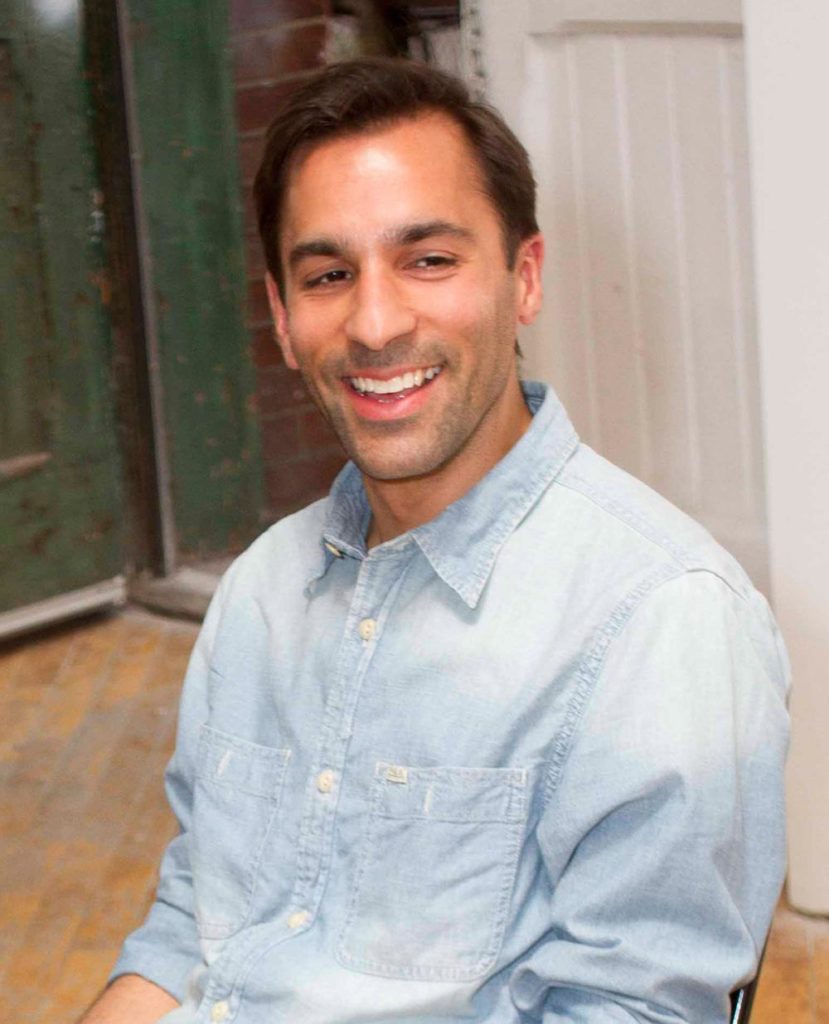In art as in life, it is always easier to study the past than predict the future. But the face of emerging art talent in Canada holds much promise for the years to come. Today 6 p.m. on the Art Toronto Stage, four innovative under-40 art professionals—collector and art historian Mary Dailey Desmarais, dealer Wil Aballe, critic and Artinfo Canada executive editor Sky Goodden, and curator and consultant Lucas Soi, director of Soi Fischer—will meet to discuss the state of their generation, the concerns of younger artists, and what might be next for the scene in general. Here, the four panellists share their responses to an advance question.
Q: How does your practice differ from that of the previous generation?
Sky Goodden: I don’t know how we’re qualifying “generation,” here. Is it marked by the standardized 25 years? Is it no longer measured by our parents’ generation, but by the last stable generation we know culturally, the Gen X?
More likely, is it measured by technology’s evolution, with the youngest adaptors of technology’s incremental advancement forever revising our lowest-common-denominator new age? Is a grad student who’s more adept at blogging than essay-writing removed from me, generationally—or just resultant, just successive in a semi-generational way?
Amid this generational confusion, what I can offer is the following: critics in Canada used to write longly, and critically. This doesn’t happen much any more.
Q: What are the concerns of younger artists right now?
Wil Aballe: Artists seem to be a lot more aware of what has come before them and what is being made around them and internationally. Easy access to imagery via the Internet has enabled a mid-century painting, for instance, to stand side by side with a contemporary work for comparison. A lot of artists I know have Tumblr blogs and share information via social media, and I can only presume that this must inform the way they work. No one truly works in isolation any longer.
Having said this, I am always looking for artists who are cultivating their own voice; artists with idiosyncratic practices are those I find most exciting. For example, Nicolas Sassoon is a really interesting multi-faceted artist who creates video, sculpture and prints with representational imagery that uses the aesthetic of early 1980s computer abstraction. His explorations are relatable to anyone whose introduction to abstraction was early video games.
We worked on a show last year called “The Green City Between Sky and Sea,” which was a back projection onto a 23-foot glass facade in Yaletown, Vancouver, that evoked falling water and CRT televisions, among other things. This fall, another one of his monumental large-scale moiré pattern animations will be projected on the outdoor surface of the New Museum.
Q: What under-40 Canadian artists are you most interested in?
Mary Dailey Desmarais: It is difficult to name just a few!
Gareth Moore’s practice is very interesting to me. Personally, I discovered his work at the Sobey Art Award exhibition at MOCCA last year, and I thought what he had done there was so fascinating.
David Armstrong Six, Nicolas Baier, Joseph Tisiga, Balint Zsako, Stephen Appleby Barr and Sarah Anne Johnson also come to mind.
I would really like to add Shuvinai Ashoona to this list. She is over 40 but she is probably less well-known to mainstream collectors.
We [my husband and I] collect both Canadian contemporary art and Inuit art. And Shuvinai is someone we are really interested in because she kind of bridges the gap between a traditional Inuit artist that is very much rooted in her history as a person from the Arctic and an artist of today who really stands up in an global context against any number of international contemporary artists.
Q: What should the role of art fairs be now and in the future in Canada?
Lucas Soi: In Canada, the funding of arts and culture is so heavily subsidized by all three levels of government that innovation is stifled. Our arts industry has suffered from chronic brain drain as artists relocate to other countries that offer a greater choice of professional opportunities.
I believe the lack of financing can be blamed on limited engagement by the mainstream public. But who can blame the average citizen for not participating when organizations in our industry ignore them in favour of complacently accepting substandard wages begrudgingly doled out by a government that does not respect the labour of its arts workers?
Since we do not apply creative thinking to the pursuit of alternative forms of financing, innovation happens at a much slower pace compared to global cities with strong commercial markets and private investment.
While I do serve on the board of directors of Art Metropole, a non-profit artist-run centre, and respect the history of the culture, I am there to help with development and fundraising. Diversified sources of income are integral to sustaining artist-run culture in Canada.
I have always focused on entreprenurial opportunities that promote intellectual freedom, bolster the free market and encourage the flow of private capital. An art fair is one model by which this can happen. By developing critical discourse outside of an institutional framework, events such as an art fair are a great way to expand our audience and create new partnerships. This inclusivity leads to greater visibility and acknowledgment of our labour. We all work so hard, so why not share it with the most amount of people?
For a further discussion of these questions, join us at the panel “The Next Generation of Canadian Art” at 6 p.m. today on the Art Toronto Stage. To read all our posts about Art Toronto, visit canadianart.ca/arttoronto. And visit Booth 940 for daily 2 p.m. editors’ talks, subscription specials and more.









